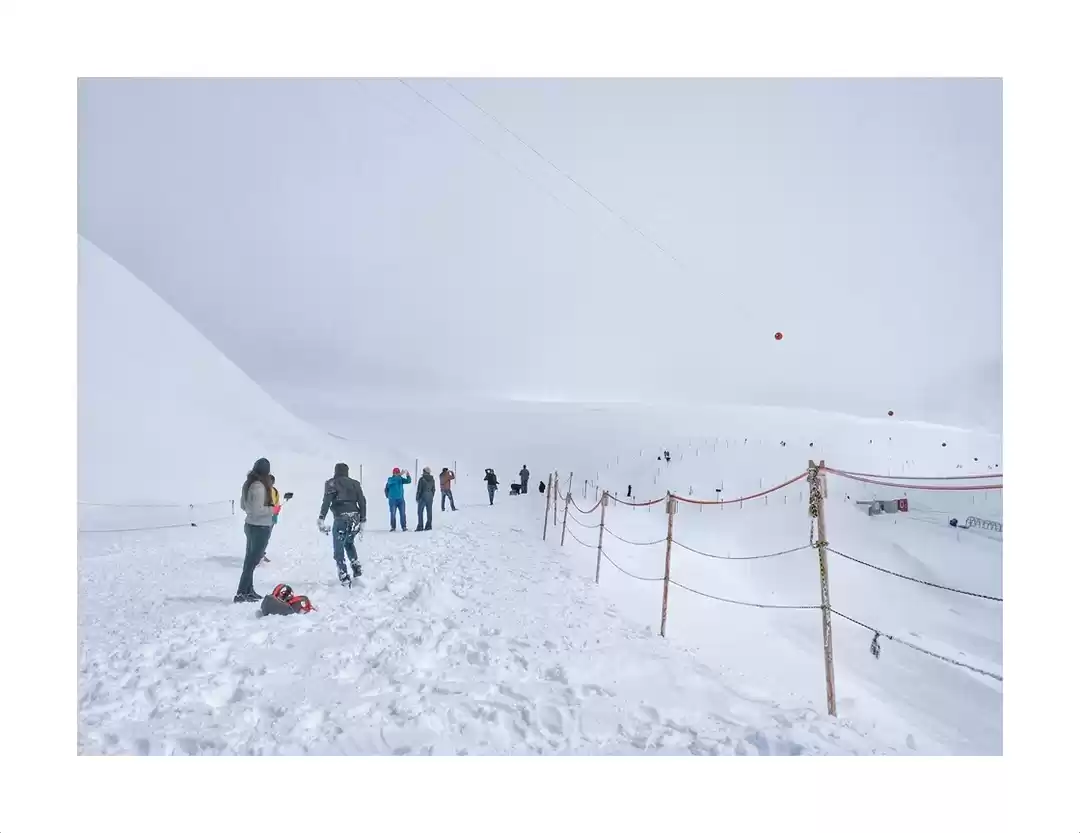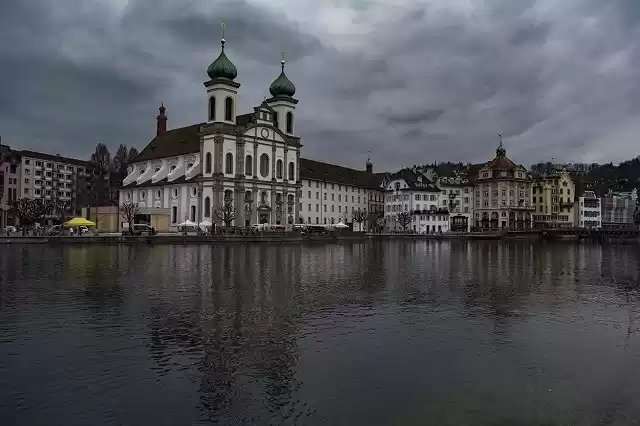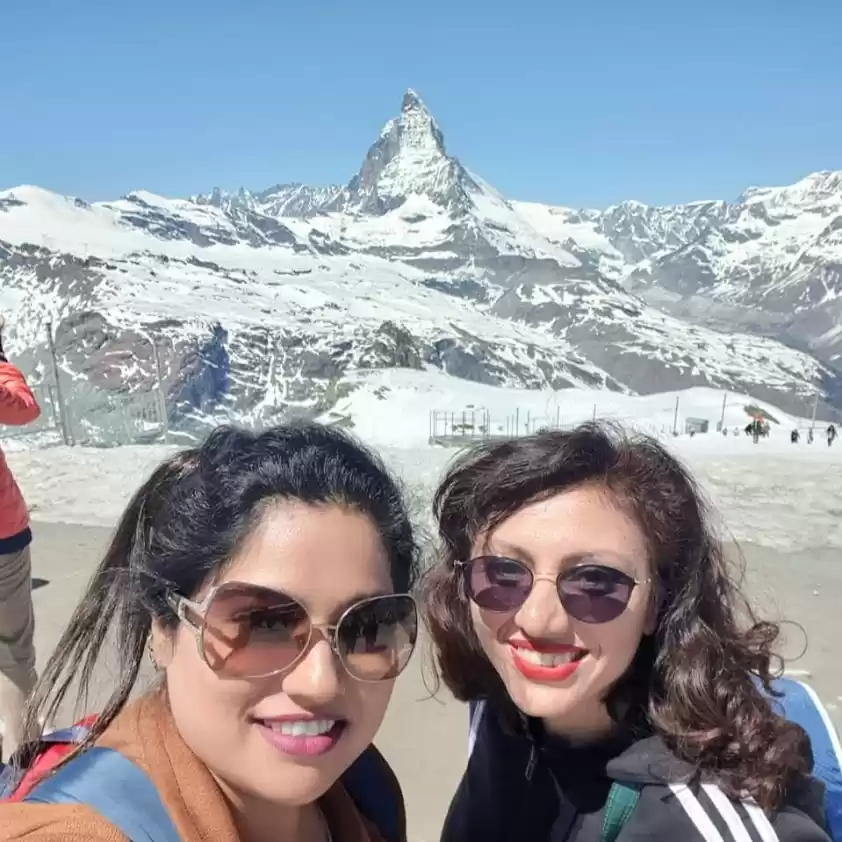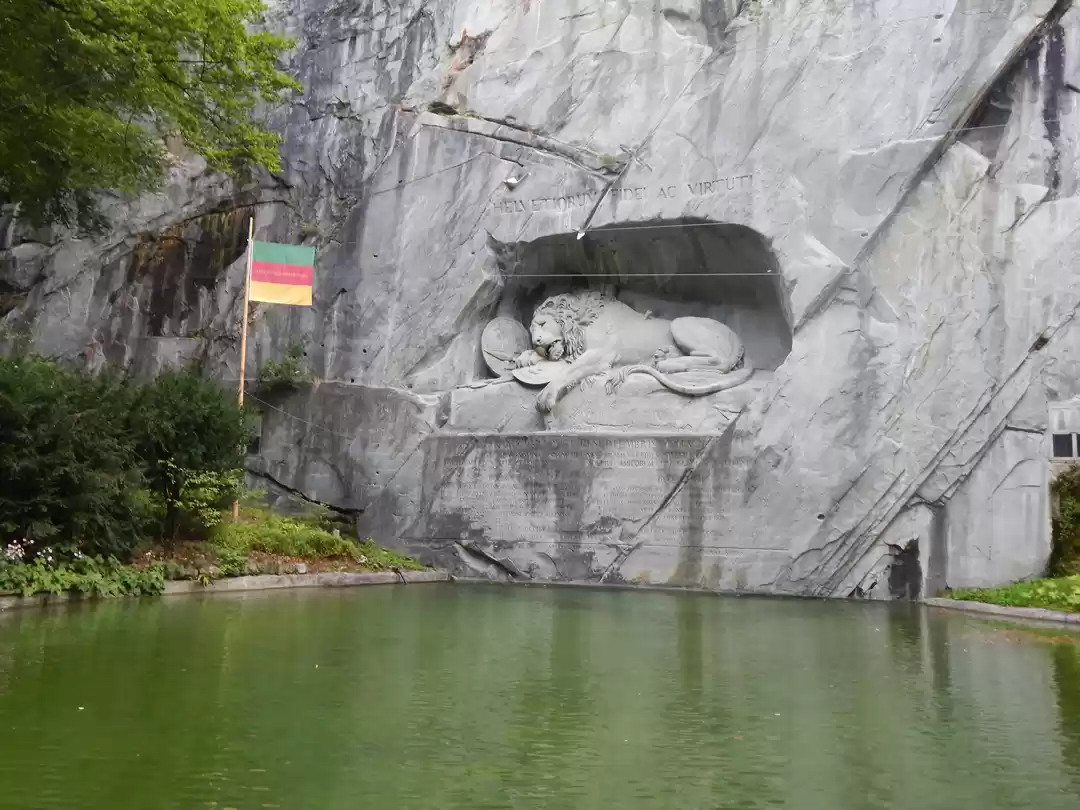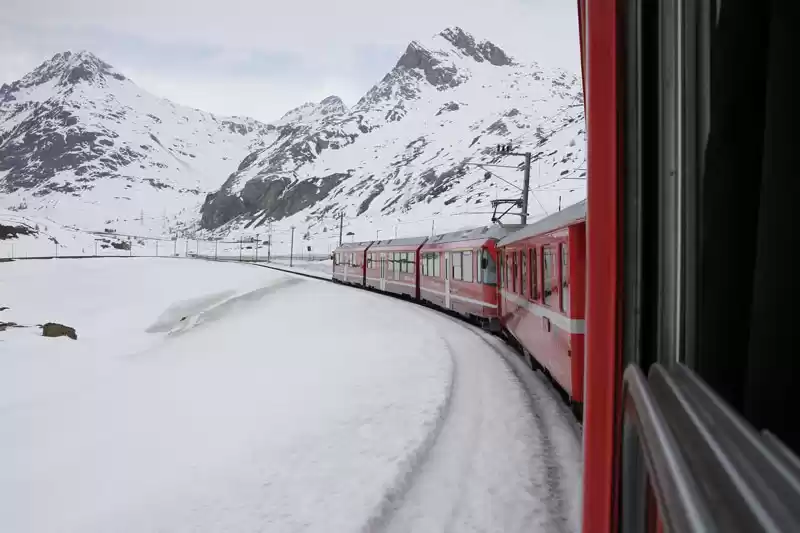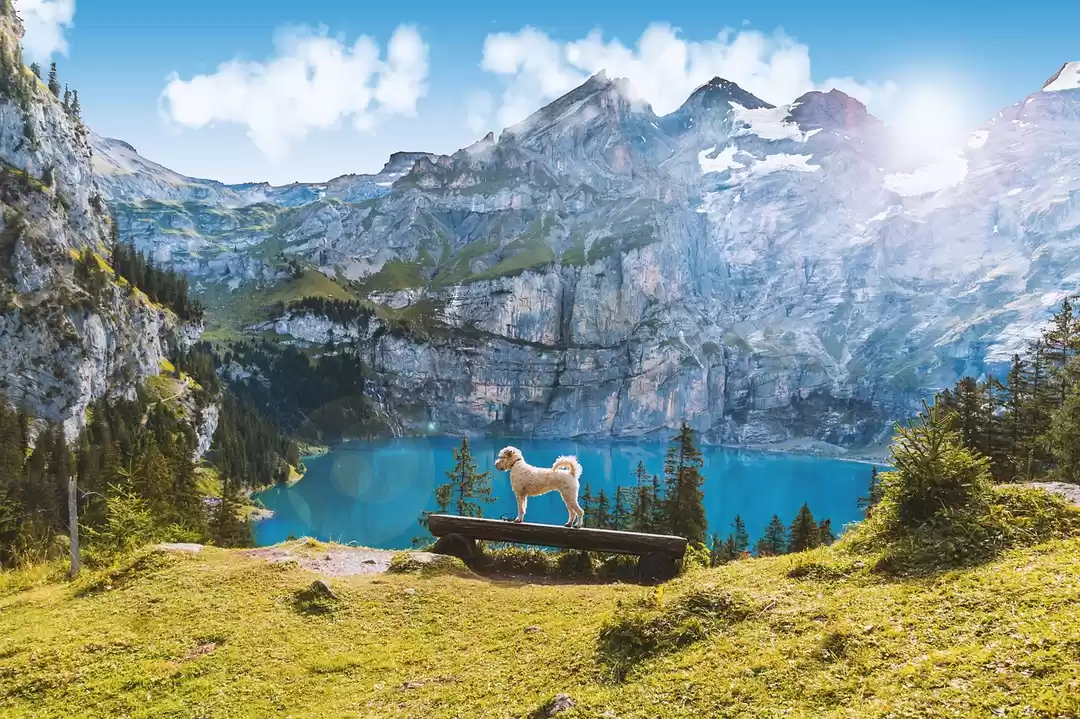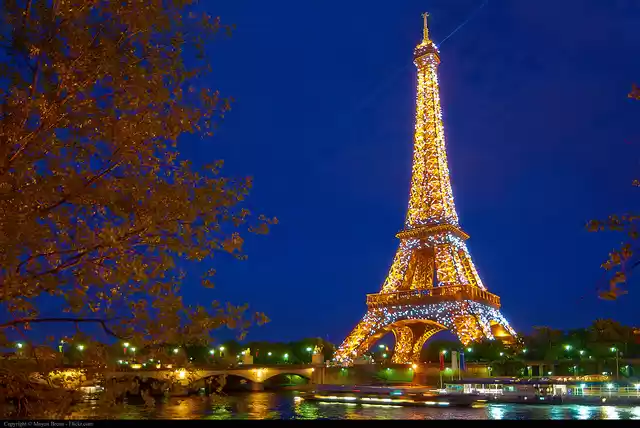Are you looking for an unforgettable adventure in Switzerland? Do you want to experience the highest railway station in Europe, the largest glacier in the Alps, and the most spectacular views of the Swiss mountains? If so, then you should definitely visit Jungfraujoch, the Top of Europe.
Jungfraujoch is a mountain pass between the peaks of Jungfrau and Mönch, located at an altitude of 3,454 meters above sea level. It is home to a scientific research station, a post office, and a UNESCO World Heritage Site. It is also the ultimate destination for anyone who loves nature, culture, and history.
In this article, we will show you how to get to Jungfraujoch, what to see and do on the summit, how to plan your visit, and how to avoid altitude sickness. We will also share some insider tips, ticket info, and recommendations that will help you make the most of your trip. Whether you are traveling solo, with your partner, with your family, or with your friends, you will find something for everyone on Jungfraujoch.
How to Get to Jungfraujoch
The only way to reach Jungfraujoch is by train. There are two main routes to choose from: from Interlaken via Lauterbrunnen or Grindelwald, or from Lucerne via Meiringen and Interlaken. Both routes are scenic and offer stunning views of the Jungfrau Region and the Bernese Oberland.
The first route takes you from Interlaken Ost to Lauterbrunnen or Grindelwald, where you change to the Wengernalp Railway. This railway takes you to Kleine Scheidegg, where you change again to the Jungfrau Railway. This railway is the highlight of the journey, as it climbs up to Jungfraujoch through a tunnel inside the Eiger and Mönch mountains.
Along the way, you can enjoy panoramic windows that reveal the Eiger North Face, the Eismeer (Sea of Ice), and the Aletsch Glacier.
The second route takes you from Lucerne to Meiringen, where you change to the Brünig Railway. This railway takes you to Interlaken Ost, where you follow the same route as the first one. This route is longer and more expensive, but it offers more variety and diversity in terms of landscapes and attractions.
The train journey to Jungfraujoch takes about 2 to 2.5 hours one way, depending on the route and the connections. The trains run daily, all year round, from early morning to late afternoon. The timetable and the prices vary according to the season and the demand, so it is advisable to check them online before you go. You can also book your tickets online in advance, which is recommended during peak season and holidays.
If you have a Swiss Travel Pass, a Swiss Half Fare Card, a Jungfrau Travel Pass, or a Eurail Pass, you can get discounts on the train tickets to Jungfraujoch. However, you still need to make a reservation and pay a surcharge for the Jungfrau Railway, which is not covered by these passes. You can also save money by buying early bird tickets, holiday special tickets, good morning tickets, good afternoon tickets, saver day pass, or regional pass, which offer lower fares for specific dates and times.
There are also some alternative ways to get to Jungfraujoch, such as by car, bus, or helicopter. However, these options are more expensive, less convenient, and less environmentally friendly than the train. Moreover, they do not offer the same experience and thrill of riding the Jungfrau Railway, which is part of the attraction of Jungfraujoch.
What to See and Do on Jungfraujoch
Once you arrive at Jungfraujoch, you will be amazed by the variety and the quality of the attractions and activities that await you. There is something for everyone on the Top of Europe, whether you are interested in nature, culture, or history. Here are some of the main things to see and do on Jungfraujoch:

Aletsch Glacier:
This is the largest and longest glacier in the Alps, stretching for 23 kilometers and covering an area of 81 square kilometers. It is also a UNESCO World Heritage Site, as it is a natural wonder and a valuable source of water and energy. You can admire the glacier from various viewpoints on Jungfraujoch, such as the Sphinx Terrace, the Plateau, and the Ice Gateway. You can also join a guided glacier walk, which takes you on a 2-hour hike across the ice and snow, and lets you discover the secrets and the beauty of the glacier.

Sphinx Terrace:
This is the highest point on Jungfraujoch, located at 3,571 meters above sea level. It is accessible by an elevator that takes you to the top of the Sphinx, a rock formation that resembles the ancient Egyptian monument. From the terrace, you can enjoy a breathtaking 360-degree view of the Swiss Alps, the Aletsch Glacier, the Jungfrau, Mönch, and Eiger peaks, and the Bernese Oberland. You can also visit the Sphinx Observatory, which is a scientific research station that conducts experiments and observations on meteorology, astronomy, and glaciology.

Ice Palace:
This is a magical and enchanting attraction that takes you into a world of ice and snow. It is a network of tunnels and chambers that are carved into the glacier, and that display various ice sculptures of animals, plants, and symbols. You can walk through the palace and admire the artistry and the craftsmanship of the ice carvers, who create and maintain the sculptures every year. You can also touch and feel the ice, which is always at a temperature of -3°C, regardless of the season.

Lindt Swiss Chocolate Heaven:
This is a sweet and delicious attraction that lets you discover the history and the process of making Swiss chocolate. It is a collaboration between Lindt, the famous chocolate brand, and Jungfrau Railways, and it features a multimedia exhibition, a chocolate shop, and a chocolate studio. You can learn about the origins and the ingredients of chocolate, watch a film that shows how Lindt produces its chocolate, and taste some samples of the finest chocolate in the world. You can also create your own chocolate masterpiece at the studio, where you can choose your favorite flavor, shape, and decoration.
Alpine Sensation:
This is a multimedia experience that tells the story of the Jungfrau Railway and its visionary founder, Adolf Guyer-Zeller. It is a circular corridor that connects the Ice Palace and the Sphinx Hall, and that features images, sounds, and lights that recreate the history and the challenges of building the railway. You can walk through the corridor and admire the portraits and the statues of the people who contributed to the railway, as well as the memorials and the artworks that commemorate the railway’s centenary in 2012.
Snow Fun Park:
This is a fun and exciting attraction that offers a range of activities and sports on the snow. It is located on the Plateau, next to the Ice Palace, and it is open from May to October. You can enjoy skiing, snowboarding, sledding, tubing, and snowshoeing on the slopes and the trails, or try the Zip Line and the Tyrolienne, which are thrilling rides that let you fly over the snow at high speed. You can also relax and have a picnic on the sun terrace, or visit the Mönchsjochhütte, which is the highest mountain hut in Switzerland, and serves traditional food and drinks.
Jungfrau Panorama 360°:
This is a cinematic attraction that shows you a panoramic film of the Jungfrau Region and the Bernese Oberland. It is located in the Jungfrau Hall, next to the Alpine Sensation, and it runs every 30 minutes. You can watch the film on a large screen that surrounds you, and immerse yourself in the beauty and the diversity of the landscapes and the seasons. You can also see some of the highlights and the attractions of the region, such as the lakes, the villages, the castles, and the festivals.
How to Plan Your Visit to Jungfraujoch
Visiting Jungfraujoch is a once-in-a-lifetime experience that requires some planning and preparation. Here are some tips and advice on how to plan your visit, and make it as enjoyable and memorable as possible:
Best time to go:
Jungfraujoch is open all year round, and each season has its own charm and advantages. However, the best time to go is from June to September, when the weather is warmer, the days are longer, and the visibility is better. You can also enjoy some special events and festivals, such as the SnowpenAir concert, the Jungfrau Marathon, and the Alpine Cheese Festival. The downside of this period is that it is also the busiest and the most expensive, so you may encounter crowds, queues, and higher fares.
If you prefer a quieter and cheaper time, you can go from October to May, when the weather is colder, the days are shorter, and the visibility is lower. You can also enjoy some winter activities and sports, such as skiing, snowboarding, and sledding. The downside of this period is that some attractions and activities may be closed or limited, and you may face some weather-related risks and delays.
How long to stay:
The optimal duration of your visit depends on your interests and your itinerary, but we recommend staying at least 4 to 5 hours on Jungfraujoch, to fully explore and enjoy the attractions and activities. You can also extend your stay to a full day or more, if you want to explore the surrounding area and visit other attractions and villages, such as Grindelwald, Wengen, Mürren, and Lauterbrunnen.
What to wear:
The temperature on Jungfraujoch is usually below zero, even in summer, and the wind can be strong and chilly. Therefore, you should wear warm and comfortable clothing and footwear, such as a winter jacket, a sweater, a hat, gloves, a scarf, and boots. You should also wear layers that you can adjust according to the weather and your activity level. You can rent or buy some winter gear at the shops on Jungfraujoch, if you need to.
What to pack:
Besides your clothing and footwear, you should also pack some essential items and accessories for your visit, such as sunscreen, sunglasses, a hat, gloves, a scarf, water, snacks, a camera, and a power bank. Sunscreen and sunglasses are especially important, as the sun can be very bright and intense on the snow, and can cause sunburn and snow blindness. Water and snacks are also important, as you may get dehydrated and hungry due to the altitude and the exertion. A camera and a power bank are also useful, as you will want to capture and share the amazing views and moments on Jungfraujoch.
Food and drinks:
There are several options for food and drinks on Jungfraujoch, ranging from fine dining to fast food. You can enjoy a gourmet meal at the Restaurant Crystal, which serves Swiss and international cuisine, and offers a panoramic view of the Aletsch Glacier. You can also enjoy a buffet lunch at the Restaurant Bollywood, which serves Indian and vegetarian dishes, and features a Bollywood theme. You can also grab a snack or a drink at the Café Bar, the Bistro, or the Kiosk, which offer sandwiches, salads, soups, pastries, coffee, tea, and soft drinks. You can also treat yourself to a glass of champagne or a cocktail at the Ice Bar, which is made entirely of ice and snow.
Souvenirs:
There are several shops on Jungfraujoch where you can buy souvenirs and gifts for yourself or your loved ones. You can find postcards, stamps, magnets, keychains, mugs, t-shirts, hats, and other items that feature the Jungfraujoch logo or the Swiss flag. You can also find chocolates, cheese, watches, knives, and other products that are typical of Switzerland. You can also send a postcard or a letter from the highest post office in Europe, which has a special Jungfraujoch stamp and a unique postmark.
Photography tips:
Jungfraujoch is a paradise for photographers, as it offers stunning views and scenery that are worth capturing and sharing. However, taking good photos on Jungfraujoch can be challenging, due to the bright sun, the snow, and the cold. Here are some tips and tricks on how to take the best photos and videos on Jungfraujoch:
Use a polarizing filter or a UV filter to reduce the glare and the haze from the sun and the snow, and to enhance the contrast and the colors of the sky and the mountains.
Use a tripod or a monopod to stabilize your camera and to avoid blurry or shaky shots, especially in low light or windy conditions.
Use a remote control or a self-timer to avoid camera shake and to take selfies or group photos, without having to hold your camera or ask someone else to take your photo.
Use a wide-angle lens or a zoom lens to capture the vastness and the details of the landscape, and to create different perspectives and compositions.
Use a high ISO or a flash to compensate for the low light and the shadows, especially inside the Ice Palace or the Alpine Sensation, or when taking portraits or close-ups.
Use a manual mode or an exposure compensation to adjust the exposure and the white balance, and to prevent overexposure or underexposure of the snow or the sky.
Use a burst mode or a video mode to capture the movement and the action of the activities and the sports, such as the Zip Line, the Tyrolienne, or the sled dog ride.
Use a panorama mode or a 360-degree camera to capture the whole view and the atmosphere of the Jungfraujoch, and to create immersive and interactive images and videos.
How to Avoid Altitude Sickness on Jungfraujoch
One of the potential risks of visiting Jungfraujoch is altitude sickness, which is a condition that occurs when the body does not get enough oxygen at high altitudes. Altitude sickness can cause symptoms such as headache, nausea, dizziness, fatigue, shortness of breath, and loss of appetite. It can also affect the mood, the performance, and the enjoyment of the visit.
Fortunately, there are some ways to prevent and treat altitude sickness, and to make the visit to Jungfraujoch as safe and comfortable as possible. Here are some tips and advice on how to avoid altitude sickness on Jungfraujoch:
Acclimatize:
The best way to prevent altitude sickness is to acclimatize to the high altitude gradually, by spending some time at lower altitudes before going to Jungfraujoch. You can do this by staying in Interlaken, Lauterbrunnen, Grindelwald, or other nearby villages for a day or two, and by taking some short trips to higher altitudes, such as Schilthorn, First, or Schynige Platte. This will help your body to adjust to the lower oxygen levels and to produce more red blood cells, which carry oxygen to the tissues.
Hydrate:
Another way to prevent altitude sickness is to hydrate well, by drinking plenty of water and avoiding alcohol and caffeine. Water helps to thin the blood and to improve the circulation, which enhances the oxygen delivery to the organs and the muscles. Alcohol and caffeine, on the other hand, dehydrate the body and constrict the blood vessels, which reduces the oxygen delivery and worsens the symptoms.
Medication:
Another way to prevent and treat altitude sickness is to take some medication, such as acetazolamide (Diamox), ibuprofen (Advil), or paracetamol (Tylenol). Acetazolamide is a prescription drug that helps to reduce the acidity of the blood and to increase the breathing rate, which improves the oxygen uptake and the acclimatization. Ibuprofen and paracetamol are over-the-counter drugs that help to relieve the pain and the inflammation caused by the altitude sickness. However, you should consult your doctor before taking any medication, and be aware of the possible side effects and interactions.
Oxygen:
Another way to treat altitude sickness is to use oxygen, which is available on Jungfraujoch at the medical center, the restaurants, and the shops. Oxygen helps to restore the normal oxygen levels in the blood and to relieve the symptoms. You can use oxygen for a few minutes or longer, depending on your condition and your preference. You can also buy or rent a portable oxygen device, which is a small canister that delivers oxygen through a mouthpiece or a mask. You can use this device whenever you feel the need, and carry it with you on the summit.
Rest:
Another way to treat altitude sickness is to rest, which means to reduce your physical activity and to take frequent breaks. Rest helps to conserve your energy and to avoid overexertion, which can worsen the symptoms. You should also avoid smoking, which can impair your lung function and your oxygen absorption. You should also avoid sleeping on Jungfraujoch, which can increase the risk of developing severe altitude sickness, such as high-altitude pulmonary edema (HAPE) or high-altitude cerebral edema (HACE). These are life-threatening conditions that require immediate medical attention and descent to lower altitudes.
Jungfraujoch is a remarkable and rewarding destination that offers a unique and unforgettable experience in Switzerland. It is a place where you can enjoy the beauty and the diversity of nature, culture, and history, and where you can have fun and adventure on the snow. It is also a place where you can challenge yourself and overcome your fears, and where you can learn and discover new things.
If you are planning to visit Jungfraujoch, we hope that this article has provided you with some useful information and tips on how to get there, what to see and do, how to plan your visit, and how to avoid altitude sickness. We also hope that this article has inspired you and motivated you to visit Jungfraujoch, and to experience the Top of Europe for yourself.
If you are ready to book your ticket or your tour to Jungfraujoch, you can do so by clicking on this link or this button. You can also find more information and resources on the official website of Jungfrau Railways, or on the website of Switzerland Tourism.
Thank you for reading this article, and we hope that you have enjoyed it. If you have any feedback, questions, or comments, please feel free to share them with us. We would love to hear from you and to help you with your trip.
Have a wonderful day and a fantastic journey to Jungfraujoch!


























